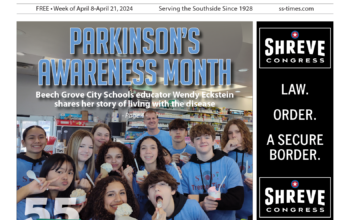By Wendell Fowler
Because I use it daily to sweeten my herbal tea and “power” smoothies, several summers back, I grew stevia plants in my Fountain Square garden. I proudly harvested the 5-feet plants, dried their leaves and ground them into a beautiful green dust. Motive: Stevia doesn’t contain carbs or calories, does not raise blood sugar and appears to be safe and nontoxic.
Stevia is a South American plant used by indigenous tribes for centuries to make tea, sweeten beverages and treat upset stomach. It’s extracted directly from the plant; it’s up to 200-300 times sweeter than sugar and doesn’t come with health problems associated with artificial sweeteners like aspartame (NutraSweet), Splenda and various alcohol sugars and Sweet’N Low.
Stevia is sold under the names of Truvia, Stevioside, Stevia In the Raw, Steviacane, Enlighten or just plain Stevia. You must read labels, and they know the apathetic majority do not, because if you don’t, you won’t notice they’ve sneaked in additional ingredients. Most grocery versions are laced with dextrose, aka, sugar, maltodextrin and natural flavoring. If you seek a no-carb, no sugar sweetener, there are only a few truthful brands. We use SweetLeaf, found in all major groceries. There should only be one or two ingredients and the second one in SweetLeaf is inulin, a fiber.
Is stevia safe? In a 2018 New York Times article, Marina Chaparro, a registered dietitian and spokesperson for the Academy of Nutrition and Dietetics was quoted: “Using stevia is a reasonable strategy to reduce the amount of sugar we consume,” said Chaparro. “It has the flavor without adding the extra sugar and affecting your blood sugar,” which is especially useful for those with diabetes. That why you must check labels for hidden carbs and dextrose.
The Center for Science in the Public Interest, a food advocacy group often critical of sugar substitutes, initially raised concerns about stevia sweeteners when they came onto the market in 2008, saying the Food and Drug Administration should have required more testing. However, the group ranked stevia as one of the safest of the sugar substitutes in a 2014 report, in part because it has a long history of use in Japan.
From a Metabolism 2004 report: “At least one study has indicated that large amounts of stevia might increase insulin secretion, possibly increasing fat storage and reducing stevia’s advantage over sugar.” Stevia has been labeled safe to use by most of the world’s health organizations. I think I’ll brew a cup of tea.

